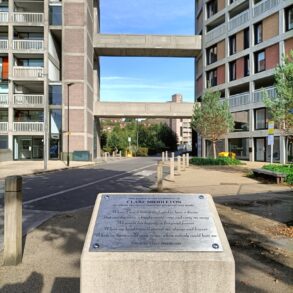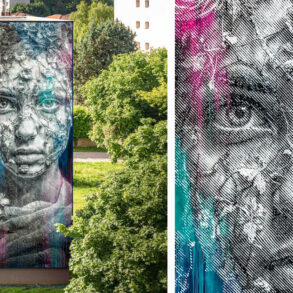Authorities in Peru are searching for a suspect after the image of a penis was spray-painted onto a wall of Chan Chan, a pre-Columbian city that is listed as a UNESCO World Heritage Site.
On May 12, a video appeared on Facebook showing a person wearing a white t-shirt and carrying a black backpack marking a large section of a mud plaster wall with black paint. The video quickly went viral online and prompted a stern response from Peru’s ministry of culture, which operates the Chan Chan Archaeological Zone.
“This act constitutes a serious lack of respect for our historical and cultural legacy, and represents a violation of the norms that protect archaeological heritage,” the ministry said in a statement. The ministry also noted that it had launched an investigation against those responsible and that it had filed a criminal complaint.
According to Andina News Agency, which is owned and operated by the Peruvian government, the action falls under Article 226 of Peru’s Penal Code and those responsible could face a fine and up to six years of imprisonment.
Shortly after the incident came to light, the site was inspected by Peru’s tourist police before the ministry of culture sent a team to clean and restore the more than 600-year-old wall to its original condition.
Cuando atacan nuestro patrimonio nos quitan identidad, memoria y futuro. Por ello, rayar o dañar un monumento arqueológico es un delito y puede costar hasta 8 años de cárcel. ⚖️ pic.twitter.com/LKzVQbjGt1
— Ministerio de Cultura (@MinCulturaPe) May 13, 2025
“We reiterate our strong commitment to the protection, conservation, and defense of the nation’s cultural heritage,” the ministry said. “We urge the citizenry to actively participate in its care and preservation.”
Chan Chan, located 300 miles north of Lima, was the capital of the Chimú kingdom, which flourished on Peru’s northern coast between the 12th and 15th centuries C.E. before becoming a vassal state in the Inca empire in the 1470s.

Adobe walls at Chan Chan in Peru. Photo: Shutterstock.
Located at the mouth of Moche River, in modern-day Trujillo, its strategic location made it a trade hub whose population grew to a peak of approximately 40,000. It was the largest city in pre-Columbian America, and featured monumental buildings, made from adobe bricks, including a series of citadels that included temples, living quarters, and storehouses that were separated by thick walls. UNESCO, which listed the site in 1986, calls Chan Chan “an absolute masterpiece of town planning” that evidences 11,000 years of cultural evolution in northern Peru.
The damage at Chan Chan follows an incident in February at the ancient city of Cusco in which a man attacked a feature of the Inca Roca Palace known as the 12-angled-stone with a hammer.
This post was originally published on this site be sure to check out more of their content.









